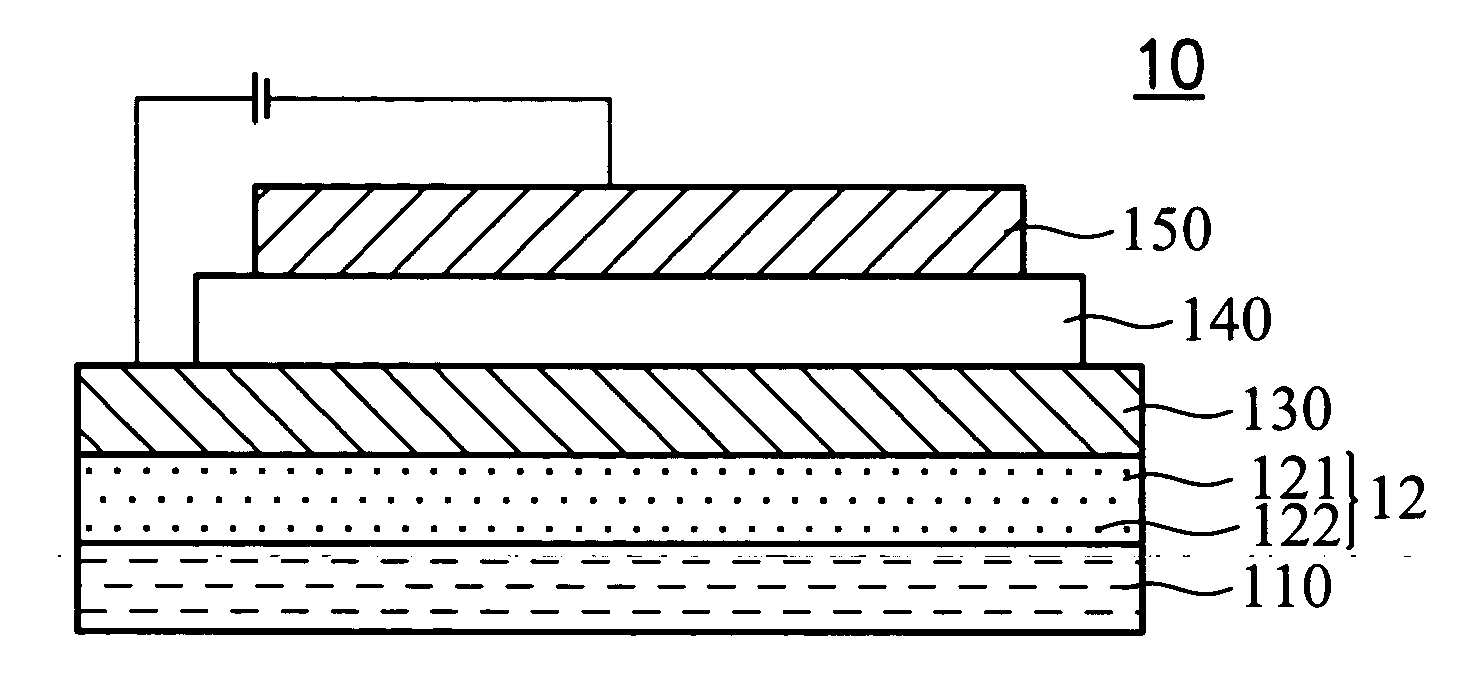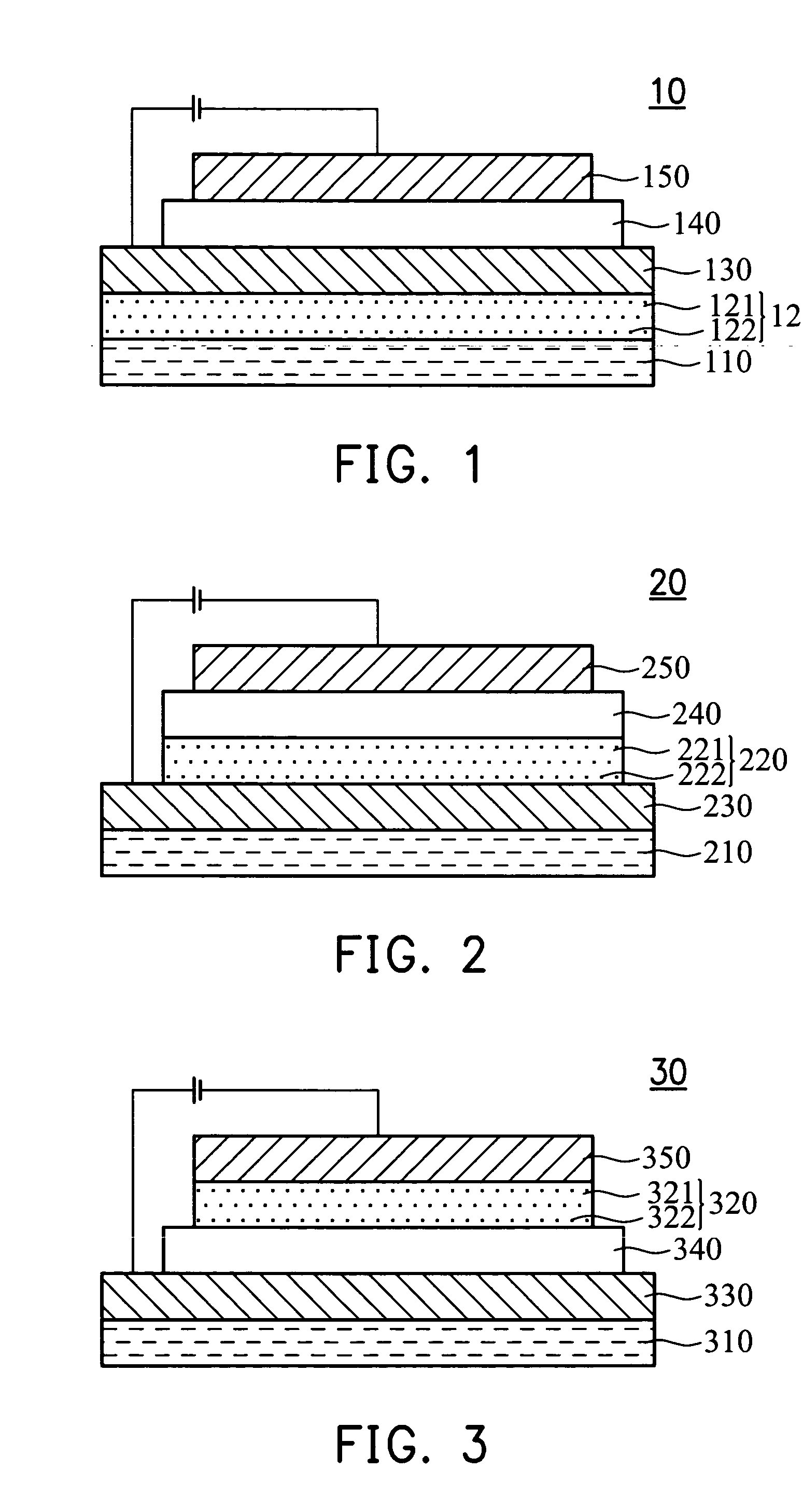Organic electroluminescent device
a technology of electroluminescent devices and organic materials, applied in the direction of discharge tubes/lamp details, discharge tubes luminescent screens, organic semiconductor devices, etc., can solve the problem of limited light in the device, and achieve the effect of increasing external quantum efficiency and luminescent efficiency
- Summary
- Abstract
- Description
- Claims
- Application Information
AI Technical Summary
Benefits of technology
Problems solved by technology
Method used
Image
Examples
first embodiment
[0036] First, a substrate 110 is provided as FIG. 1, transparent or opaque, formed with glass or plastic (flexible) material.
[0037] Nanostructured organic electroluminescent recovery layer 120 is formed with dielectric or organic material 121 and nanoscale metal particles 122 on the substrate 121. The dielectric or organic material 121 and the nanoscale metal particles 122 are formed at the same time using the same or different methods. The nanoscale metal particles 122 are doped into the dielectric or organic material 121. The dielectric material for the nanostructured organic electroluminescent recovery layer is silicon oxide, aluminum oxide, magnesium oxide, silicon nitride, aluminum nitride or magnesium fluoride, and is formed by sputtering or plasmon enhanced chemical vapor deposition. The organic material for the nanostructured organic electroluminescent recovery layer is molecular or polymer organic material, formed by thermal evaporation, spin coating, ink jet, or screen pr...
second embodiment
[0042] The nanostructured organic electroluminescent recovery layer 220 of this embodiment differs only from the previous embodiment in that the nanostructured organic electroluminescent recovery layer 220 is between the first electrode 230 and the organic luminescent layer 240.
third embodiment
[0043] The nanostructured organic electroluminescent recovery layer 320 of this embodiment differs only from the previous embodiments in that the nanostructured organic electroluminescent recovery layer 320 is between the organic luminescent layer 340 and the second electrode 350.
PUM
 Login to View More
Login to View More Abstract
Description
Claims
Application Information
 Login to View More
Login to View More - R&D
- Intellectual Property
- Life Sciences
- Materials
- Tech Scout
- Unparalleled Data Quality
- Higher Quality Content
- 60% Fewer Hallucinations
Browse by: Latest US Patents, China's latest patents, Technical Efficacy Thesaurus, Application Domain, Technology Topic, Popular Technical Reports.
© 2025 PatSnap. All rights reserved.Legal|Privacy policy|Modern Slavery Act Transparency Statement|Sitemap|About US| Contact US: help@patsnap.com



